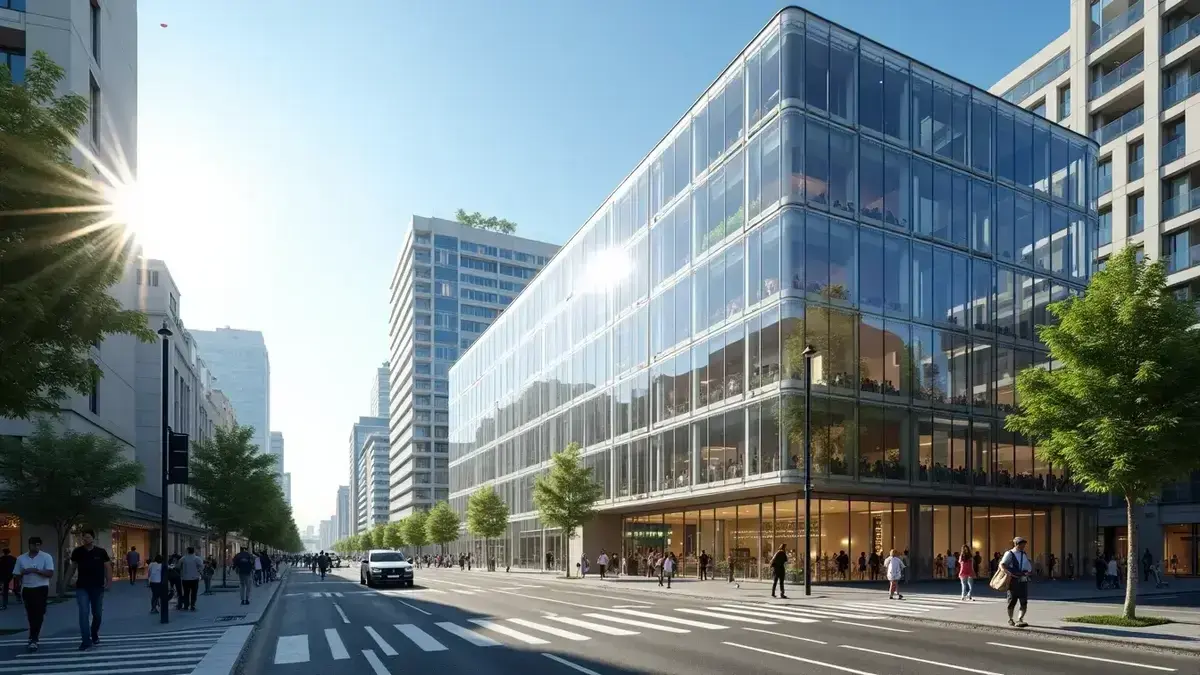South Korea has recently unveiled a remarkable innovation with the world’s first invisible solar panel, aimed at transforming any glass surface into a valuable source of energy. With a conversion efficiency of 15.8% and a visual transparency of 20%, this technology seamlessly integrates into urban architecture while preserving the aesthetics of buildings. It promises a reduced environmental impact, although further research efforts are needed to overcome the challenges of this advancement.
Essence of the information
- South Korea introduces an invisible solar panel.
- Transforms glass surfaces into energy sources.
- Integrates solar energy into urban architecture.
- Potential for efficiency and reduced environmental impact.
South Korea Presents an Invisible Solar Panel
South Korea impresses with the presentation of its first invisible solar panel, a technological advancement that revolutionizes the way we view renewable energy and its integration into our daily lives. This innovation, which utilizes glass surfaces as energy sources, represents a significant step towards more sustainable and functional urban architecture.
Transformation of Glass Surfaces into Energy Sources
The concept is based on the ability to transform ordinary windows into energy generators. Thanks to advanced technologies, these invisible solar panels can capture sunlight without compromising the visual transparency of glass surfaces. This opens up new possibilities for contemporary architecture, where aesthetics and sustainability can coexist harmoniously.
Perfect Integration of Solar Energy into Urban Architecture
With this innovation, the integration of solar energy into urban architecture is not only possible but also desirable. Buildings no longer need to display bulky solar panels that may detract from their appearance; instead, windows and facades become elements of energy production while maintaining their modern and elegant look.
Conversion Efficiency of 15.8% and Visual Transparency of 20%
The first prototypes of these panels demonstrate a conversion efficiency of 15.8%, which is an impressive achievement for a technology based on glass surfaces. Additionally, they provide a visual transparency of 20%, allowing interior spaces to benefit from natural light while generating energy.
Installation on Windows and Facades, Preservation of Urban Aesthetics
The applications of these panels are vast. They can be installed on residential windows, in offices, or on public infrastructure. This versatility helps to preserve urban aesthetics while maximizing the use of renewable energy in various contexts.
Various Applications: Homes, Offices, Public Infrastructure
The potential applications are virtually limitless. Whether it’s private homes looking to reduce their ecological footprint or offices aiming for increased energy efficiency, these invisible solar panels offer customizable solutions that meet various needs and expectations.
Reduced Environmental Impact, Promotion of Sustainability
This innovation also has a positive impact on the environment. By promoting the use of solar energy, it helps to reduce dependency on non-renewable energy sources and contributes to a greater sustainability and the protection of our planet. In a world where the climate crisis is a significant issue, every effort counts.
Challenges: Lower Conversion Efficiencies Compared with Opaque Panels
However, this technology also faces challenges. Despite their advantages, invisible solar panels exhibit lower conversion efficiencies compared to their opaque counterparts. This calls for research and innovation efforts to overcome these limitations and improve the energy efficiency of these systems.
Innovation in Research Necessary for Improvement of the Technology
Ongoing innovation in research is essential to develop solutions that remain competitive in the renewable energy market. This includes perfecting materials, optimizing production processes, and enhancing panel performance over time.
Vision of a Future Where Renewable Energy is Integrated into Daily Life
In summary, the vision behind these invisible solar panels is one of a future where renewable energy is seamlessly integrated into our daily lives. By combining technology and design, South Korea is paving the way for a new energy era that could define urban planning and architecture for tomorrow.

